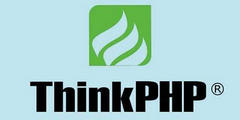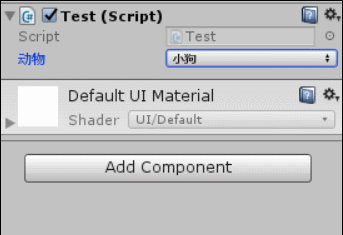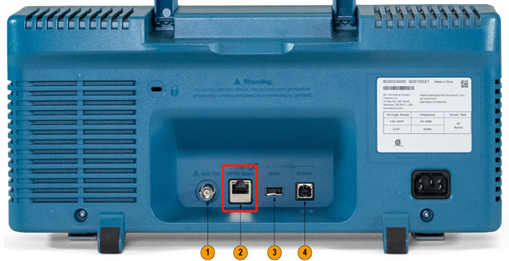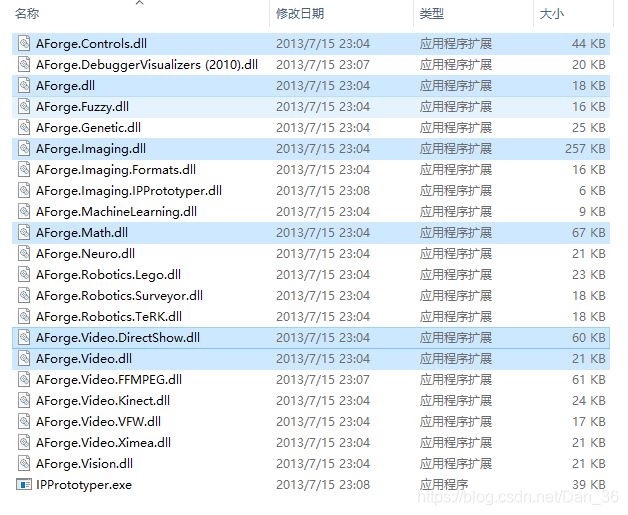How to deserialize a node in a large document using XmlSerializer(如何使用 XmlSerializer 反序列化大型文档中的节点)
问题描述
我有一个大型 XML 文档,已加载到 XmlDocument 中,我想使用 XmlSerializer 类将其中的选定元素反序列化为生成的 .NET 类使用 xsd.exe.
I have a large XML document that I have loaded into an XmlDocument and I want to use the XmlSerializer class to deserialize selected elements from it into a .NET class generated using xsd.exe.
这是迄今为止我尝试过的 MCVE;xsd 和生成的类在帖子的末尾.如代码中的注释中所述,我得到一个 InvalidOperationException - <Cars xmlns:'http://MyNamespace'/>没想到:
Here's an MCVE of what I've tried so far; the xsd and generated class are at the end of the post. As noted in the comments in the code, I am getting an InvalidOperationException - <Cars xmlns:'http://MyNamespace' /> was not expected:
static string XmlContent = @"
<RootNode xmlns=""http://MyNamespace"">
<Cars>
<Car make=""Volkswagen"" />
<Car make=""Ford"" />
<Car make=""Opel"" />
</Cars>
</RootNode>";
static void TestMcve()
{
var doc = new XmlDocument();
doc.LoadXml(XmlContent);
var nsMgr = new XmlNamespaceManager(doc.NameTable);
nsMgr.AddNamespace("myns", "http://MyNamespace");
var rootSerializer = new XmlSerializer(typeof(RootNode));
var root = (RootNode) rootSerializer.Deserialize(new XmlNodeReader(doc));
Console.WriteLine(root.Cars[0].make); // Works fine so far
var node = doc.DocumentElement.SelectSingleNode("myns:Cars", nsMgr);
Console.WriteLine(node.OuterXml);
var carSerializer = new XmlSerializer(typeof(Car));
using (var reader = new XmlNodeReader(node))
{
// What I want is a list of Car instances deserialized from
// the Car child elements of the Cars element.
// The following line throws an InvalidOperationException
// "<Cars xmlns:'http://MyNamespace' /> was not expected"
// If I change SelectSingleNode above to select "myns:Cars/myns:Car"
// I get "<Car xmlns:'http://MyNamespace' /> was not expected"
var result = carSerializer.Deserialize(reader);
}
}
我还想随后更新我的 Car 类实例,并使用 XmlSerializer 将其插入回文档中,这是后续问题的主题 如何使用 XmlSerializer 在大文档中插入节点.
I also want to subsequently update my Car class instance, and insert it back into the document using the XmlSerializer, which is the subject of a follow-up question How to insert a node in a large document using XmlSerializer
.
xsd 和生成的类如下:
The xsd and generated classes follow:
<xs:schema xmlns="http://MyNamespace" xmlns:xs="http://www.w3.org/2001/XMLSchema"
targetNamespace="http://MyNamespace"
elementFormDefault="qualified" attributeFormDefault="unqualified"
version="3.9.0.8">
<xs:complexType name="Cars">
<xs:sequence>
<xs:element name="Car" type="Car" maxOccurs="unbounded"/>
</xs:sequence>
</xs:complexType>
<xs:complexType name="Car">
<xs:attribute name="make" type="xs:string" use="required"/>
</xs:complexType>
<xs:complexType name="RootNode">
<xs:sequence>
<xs:element name="Cars" type="Cars" minOccurs="0"/>
</xs:sequence>
</xs:complexType>
<xs:element name="RootNode" type="RootNode" />
</xs:schema>
xsd.exe 生成的代码:
Code generated by xsd.exe:
using System.Xml.Serialization;
/// <remarks/>
[System.CodeDom.Compiler.GeneratedCodeAttribute("xsd", "4.6.1055.0")]
[System.SerializableAttribute()]
[System.Diagnostics.DebuggerStepThroughAttribute()]
[System.ComponentModel.DesignerCategoryAttribute("code")]
[System.Xml.Serialization.XmlTypeAttribute(Namespace="http://MyNamespace")]
[System.Xml.Serialization.XmlRootAttribute(Namespace="http://MyNamespace", IsNullable=false)]
public partial class RootNode {
private Car[] carsField;
/// <remarks/>
[System.Xml.Serialization.XmlArrayItemAttribute(IsNullable=false)]
public Car[] Cars {
get {
return this.carsField;
}
set {
this.carsField = value;
}
}
}
/// <remarks/>
[System.CodeDom.Compiler.GeneratedCodeAttribute("xsd", "4.6.1055.0")]
[System.SerializableAttribute()]
[System.Diagnostics.DebuggerStepThroughAttribute()]
[System.ComponentModel.DesignerCategoryAttribute("code")]
[System.Xml.Serialization.XmlTypeAttribute(Namespace="http://MyNamespace")]
public partial class Car {
private string makeField;
/// <remarks/>
[System.Xml.Serialization.XmlAttributeAttribute()]
public string make {
get {
return this.makeField;
}
set {
this.makeField = value;
}
}
}
推荐答案
这里有两个问题:
var node = doc.DocumentElement.SelectSingleNode("myns:Cars", nsMgr);位于<Car>节点的重复序列的容器元素 - 但您的XmlSerializer被构造为反序列化名为<Car>.尝试使用反序列化单个汽车的序列化程序反序列化一系列汽车是行不通的.
The
var node = doc.DocumentElement.SelectSingleNode("myns:Cars", nsMgr);is positioned at the<Cars>element -- the container element for the repeating sequence of<Car>nodes -- but yourXmlSerializeris constructed to deserialize a single root element named<Car>. Trying to deserialize a sequence of cars with a serializer constructed to deserialize a single car will not work.
出于某种原因,xsd.exe 为您的 Car 类型生成了一个定义,但没有 XmlRoot 属性:
For some reason xsd.exe generated a definition for your Car type without an XmlRoot attribute:
[System.Xml.Serialization.XmlTypeAttribute(Namespace = "http://MyNamespace")]
// Not included!
//[System.Xml.Serialization.XmlRootAttribute(Namespace = "http://MyNamespace")]
public partial class Car
{
}
因此,如果您尝试将 Car 作为 XML 文档的根 XML 元素序列化或反序列化,那么 XmlSerializer 将期望该根元素不在任何命名空间中.大型文档中的每个 <Car> 节点都位于 "http://MyNamespace" 默认命名空间中,因此尝试单独反序列化每个节点也行不通.
Thus if you attempt to serialize or deserialize a single instance of a Car as the root XML element of an XML document then XmlSerializer will expect that root element to not be in any namespace. Each <Car> node in your large document is in the "http://MyNamespace" default namespace, so attempting to deserialize each one individually also will not work.
您可以手动将缺少的 [XmlRoot(Namespace = "http://MyNamespace")] 属性添加到 Car,但这样做可能会很麻烦如果随后修改了 XSD 文件并且需要重新生成 c# 类型.
You could manually add the missing [XmlRoot(Namespace = "http://MyNamespace")] attribute to Car, but having to do this can be a nuisance if the XSD files are subsequently modified and the c# types need to be regenerated.
要避免这两个问题,您可以使用 XmlNode.SelectNodes(String, XmlNamespaceManager) 选择 XmlRootAttribute 的 带有被反序列化的节点的元素名称和命名空间.首先,定义如下扩展方法:XmlSerializer
To avoid both issues, you can use XmlNode.SelectNodes(String, XmlNamespaceManager) to select every <Car> nodes inside the <Cars> element, then deserialize each one by constructing an XmlSerializer with an override XmlRootAttribute with the element name and namespace of the node being deserialized. First, define the following extension methods:
public static partial class XmlNodeExtensions
{
public static List<T> DeserializeList<T>(this XmlNodeList nodes)
{
return nodes.Cast<XmlNode>().Select(n => n.Deserialize<T>()).ToList();
}
public static T Deserialize<T>(this XmlNode node)
{
if (node == null)
return default(T);
var serializer = XmlSerializerFactory.Create(typeof(T), node.LocalName, node.NamespaceURI);
using (var reader = new XmlNodeReader(node))
{
return (T)serializer.Deserialize(reader);
}
}
}
public static class XmlSerializerFactory
{
// To avoid a memory leak the serializer must be cached.
// https://stackoverflow.com/questions/23897145/memory-leak-using-streamreader-and-xmlserializer
// This factory taken from
// https://stackoverflow.com/questions/34128757/wrap-properties-with-cdata-section-xml-serialization-c-sharp/34138648#34138648
readonly static Dictionary<Tuple<Type, string, string>, XmlSerializer> cache;
readonly static object padlock;
static XmlSerializerFactory()
{
padlock = new object();
cache = new Dictionary<Tuple<Type, string, string>, XmlSerializer>();
}
public static XmlSerializer Create(Type serializedType, string rootName, string rootNamespace)
{
if (serializedType == null)
throw new ArgumentNullException();
if (rootName == null && rootNamespace == null)
return new XmlSerializer(serializedType);
lock (padlock)
{
XmlSerializer serializer;
var key = Tuple.Create(serializedType, rootName, rootNamespace);
if (!cache.TryGetValue(key, out serializer))
cache[key] = serializer = new XmlSerializer(serializedType, new XmlRootAttribute { ElementName = rootName, Namespace = rootNamespace });
return serializer;
}
}
}
然后反序列化如下:
var nodes = doc.DocumentElement.SelectNodes("myns:Cars/myns:Car", nsMgr);
var cars = nodes.DeserializeList<Car>();
如此答案 Marc Gravell.
示例工作 .Net fiddle.
这篇关于如何使用 XmlSerializer 反序列化大型文档中的节点的文章就介绍到这了,希望我们推荐的答案对大家有所帮助,也希望大家多多支持编程学习网!
本文标题为:如何使用 XmlSerializer 反序列化大型文档中的节点


基础教程推荐
- 从 VS 2017 .NET Core 项目的发布目录中排除文件 2022-01-01
- 将事件 TextChanged 分配给表单中的所有文本框 2022-01-01
- 错误“此流不支持搜索操作"在 C# 中 2022-01-01
- JSON.NET 中基于属性的类型解析 2022-01-01
- 全局 ASAX - 获取服务器名称 2022-01-01
- 首先创建代码,多对多,关联表中的附加字段 2022-01-01
- 经典 Asp 中的 ResolveUrl/Url.Content 等效项 2022-01-01
- 是否可以在 asp classic 和 asp.net 之间共享会话状态 2022-01-01
- 在 VS2010 中的 Post Build 事件中将 bin 文件复制到物 2022-01-01
- 如何动态获取文本框中datagridview列的总和 2022-01-01

















